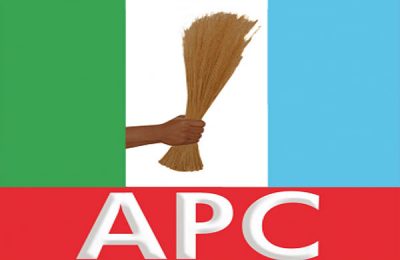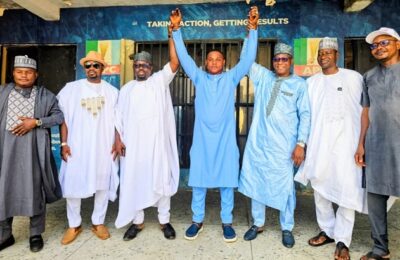A PAPER PRESENTATION BY OLANIYAN A.Ο (MR)
ASST. CHIEF MUSEUM EDUCATION OFFICER
TITLE:
THE FUTURE OF MUSEUMS IN RAPIDLY CHANGING COMMUNITIES INSIGHTS FROM THE NATIONAL MUSEUM LOKOJA AND KOGI STATE
DATED: 19TH OF MAY, 2025
AT
THE BASEMENT HALL, NATIONAL MUSEUM OF COLONIAL HISTORY, LOKOJA.
FOR
INTERNATIONAL MUSEUM DAY CELEBRATION
INTRODUCTION
International Museum Day (IMD), celebrated every 18th of May, is a vital global platform established by the International Council of Museums (ICOM) to raise awareness about the role of museums in the development of society. The 2025 theme, “The Future of Museums in Rapidly Changing Communities,” is a call to action for museums across the globe to respond proactively to the immense socio-cultural and technological transformations shaping our present and future. For Nigeria, and particularly Kogi State, this theme is timely and instructive. It prompts reflection on how museums such as the National Museum Lokoja can evolve within the context of a dynamic and historically significant region, adapting to new realities while preserving invaluable heritage..
Understanding Rapidly Changing Communities
Communities today are undergoing transformations at an unprecedented pace due to a confluence of factors urbanization, digital disruption, globalization, migration, economic shifts, environmental change. and political instability. In Nigeria, these changes are acutely felt in middle-belt states like Kogi, where Lokoja-the state capital-sits at the confluence of the Niger and Benue rivers. Lokoja is not only geographically central but historically pivotal, having served as the first administrative capital of modern Nigeria under British colonial rule.
In recent years, Kogi State has witnessed significant socio-economic changes. Rapid urban growth, increased mobility of people, infrastructural expansion, and the pressures of modernization are altering traditional ways of life. These developments bring both challenges and opportunities for cultural institutions. As heritage bearers, museums must remain relevant by responding creatively to the changing needs, identities, and expectations of their communities
The Role of Museums in Contemporary Society
Historically, museums were seen primarily as repositories of artifacts-guardians of the past tasked with collecting, conserving, and displaying cultural and natural heritage. in recent decades, however, the role of museums has expanded. Today’s museums are expected to be centers of learning, dialogue, innovation, and community engagement. They are called to act as inclusive spaces that promote cultural diversity, social cohesion, and critical reflection.
In a rapidly changing world, museums must reimagine their missions. They are no longer static institutions but dynamic agents capable of addressing societal issues such as identity, memory, climate change, conflict, and inequality They must use their platforms to educate, inspire, and empower-especially in regions like Kogi State where the rich tapestry of history and culture must be woven into the narrative of development
National Museum Lokoja: History, Legacy, and Role
The National Museum Lokoja, established in 1988 by the National Commission for Museums anf Monuments (NCMM) is a critical custodian of Nigeria’s historical and cultural legacy situated in one of Nigeria’s most historically rich cities, the museum tells the story of Lokoge’s colonial past, its indigenous communities, its position as a meeting point of divene ethnicities and its place in national formation,
The museum’s collection includes colonial relics, ethnographic materials and photographic archives that document the administrative and missionary history of Lokoja. It also features narratives of the British Royal Niger Company, Christian missionary activities, and indigenous resistance. Through exhibitions and public programming, the museum provides, educational resources for students, researchers, tourists, and community members.
Beyond its exhibitions, the National Museum Lokoja plays a vital role in preserving local identities, promoting tourism, and encouraging intergenerational dialogue. However, to fulfil its potential in today’s rapidly evolving society, it must undergo strategic transformation.
Challenges Facing the National Museum Lokoja
Despite its significance, the National Museum Lokoja faces numerous challenges:
- Limited Funding and Resources: Like many public museums in Nigeria, it suffers from underfunding, which hampers maintenance, staff training, research activities, and exhibition renewal
- Digital Deficiency: The lack of digitized collections and an online presence limits the museum’s reach, particularly among digitally inclined youth and international audiences
- Audience Engagement:The museum struggles to attract consistent local patronage. especially among school-age children and young adults who may not see it as relevant to their lives
4 Infrastructure and Security: Inadequate infrastructure, outdated display technologies, and concerns about artifact security affect the quality of visitor experience and artifact preservation.
- Marginalization of Indigenous Knowledge: The absence of community-based curation and insufficient integration of local voices into museum programming reduce community ownership and cultural continuity.
Opportunities and Innovations for the Future
The future of museums lies in their ability to adapt. For the National Museum Lokoja, the following opportunities offer pathways to sustainability and greater impact:
- Digital Transformation: Embracing digital tools such as virtual exhibitions, mobile applications, 3D scanning of artifacts, and online learning platforms can extend the museum’s reach and enrich its educational offerings.
- Community Co-Curation: Engaging local communities in curating exhibitions and storytelling ensures that the museum reflects the lived experiences and evolving identities of its constituents.
- Educational Partnerships: Collaborations with schools, universities, and NGOs can deepen educational impact and foster a culture of heritage appreciation among the youth.
- Heritage Tourism Development: With Lokoja’s proximity to the Niger-Benue confluence and its colonial landmarks, the museum can anchor broader tourism initiatives that boost the local economy
- Inclusive Programming: Programs that involve women, youth, artists, and marginalized groups can transform the museum into a truly inclusive civic space.
- Green Museums and Climate: Resilience Museums can lead climate action by modeling sustainable practices, educating the public about environmental stewardship, and preserving ecological heritage
Recommendations for the Future
To ensure the National Museum Lokoja thrives in a rapidly changing world, the following strategic actions are recommended:
Increase Investment: Government and private sector stakeholders must prioritize funding for museums as tools for education, identity formation, and economic growth
Professional Capacity Building: Ongoing training for museum staff in digital technologies. curatorial innovation, and public engagement is essential
Policy Advocacy: Local governments and cultural institutions must develop policies that support museum development, heritage education, and community involvement.
Digital Heritage Initiatives Launching digitization projects and creating an online presence will democratize access to the museum’s collections and attract global audiences.




